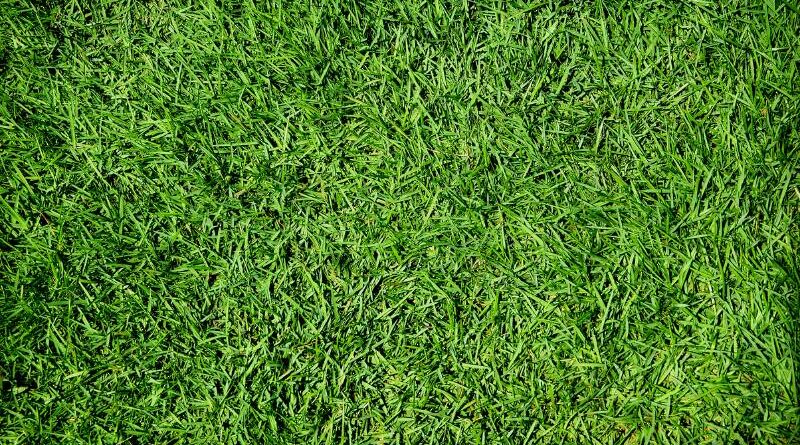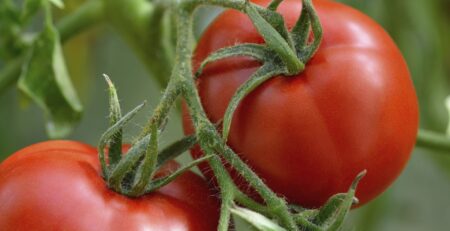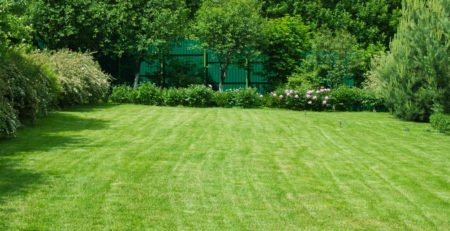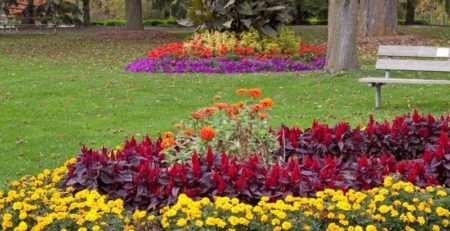Chinch Bugs in St. Augustine Lawns
Q: My St. Augustine lawn has dried or dead patches now, in the hottest part of the summer. The grass doesn’t respond to watering, and the patches are rapidly getting larger. What’s the problem?
A:
The lawn may be infested with the Southern chinch bug, a common pest in St. Augustine lawns. Treat with a properly labeled turf insecticide immediately. Left untreated, the insects can kill large parts of the yard in a week or two.
What to look for
Chinch bugs like it hot. You’ll find them in the sunniest parts of the yard, often next to a hot sidewalk or driveway, in mid-summer to early fall. They often infest the same parts of the lawn year after year. Chinch bugs damage the grass by feeding on the leaves with their slender beak and injecting poisonous saliva into the turf.
The first clue you may have chinch bugs in your lawn is patches of dead or stunted grass surrounded by a border of yellowing, dying grass. The best way to confirm you have chinch bugs is to find large numbers of them in the affected grass, preferably before a sizeable part of the lawn is damaged.
To confirm a diagnosis of chinch bugs, mix 2 tablespoons of liquid dishwashing detergent in a gallon of water. Using a watering can, pour this solution evenly over one square yard of affected turf. Then look for tiny (1/8 to 1/10-inch) black insects with irregular white diamonds on their backs. You also may see the immature red form of the insect. If you find 20 to 25 insects per square foot, you probably have a chinch bug problem.
Is the lawn damage caused by chinch bugs or something else?
It’s easy to confuse chinch bugs with other turfgrass issues but be mindful of when the lawn damage occurs. Chinch bugs live in the grass all year, but the damage they cause will always appear in mid-summer.
Take-all root rot (TARR), a fungal disease, appears primarily in St. Augustine grass in early to mid-spring (March-May). As the grass tries to green up in the spring, it appears yellowed and lethargic, often in washes of yellow leaves which turn brown and wilt. The runners and blades pull loose together. TARR is not a hot-weather disease.
Large patch, another lawn fungal disease, affects the leaf blades of St. Augustine in the early fall. Grass blades first turn yellow, then browned and shriveled, in round patches 12 to 24 inches across. Grass leaves can be easily pulled from the runners.
An under-watered lawn can mimic damage by chinch bugs. Lawns stressed from lack of water are more vulnerable to chinch bugs because they thrive in hot, dry environments. Watch your lawn for signs of water stress and irrigate immediately when grass blades begin to curl or have a dull bluish-gray color.
How can I avoid chinch bugs?
Homeowners can manage chinch bugs by controlling thatch buildup, applying the correct amount of fertilizer and water to the lawn, and not planting varieties of St. Augustine that are susceptible to them.
Texas A&M AgriLife Extension defines thatch as “the intermingled layer of living and dead grass stems, roots, rhizomes, and stolons that develops between the lawn’s live green vegetation and the soil surface.” Thatch is a cozy environment for chinch bugs. Keep thatch to a minimum with frequent mowing, which reduces the amount of clippings that must decompose between mowings. Top dressing the lawn with a thin layer of soil or compost can speed up the decay of grass clippings. Lawn aeration, or punching holes in the turf to increase the penetration of water and air, can also reduce thick layers of thatch.
Overfertilizing your lawn encourages thatch formation, and chinch bugs use the fertilizer as a food source. Apply no more than three to four pounds of nitrogen per 1,000 square feet each year in sunny locations. In turf grass that is regularly infested with the insect, use organic, or slow-release, nitrogen fertilizer and reduce the rate of nitrogen application to about two pounds of nitrogen per 1,000 square feet per year.
Don’t over-water or under-water your grass. Microbes needed to decompose thatch cannot live in over-watered, soggy soil; while under-watered grass is more susceptible to chinch damage.
How do I control chinch bugs?
Inspect your lawn. The best way to know you have chinch bugs is finding large numbers of them in damaged areas of your lawn, preferably before a sizable part of the lawn is damaged. Make sure treatment is truly needed before using pesticides. If you had chinch bugs in prior years, monitor the areas of the lawn that were affected, even if you haven’t yet seen turf damage. Chinch bugs overwinter in the turf and emerge to affect the same area again. In either case, treat immediately if you find active insects.
Granular insecticides can be applied with a standard fertilizer spreader. Irrigate lightly (1/8 to 1/4-inch) after granular application to activate the insecticide. Liquid sprays are usually applied with a hose-end sprayer, sweeping back and forth over the affected area. Water before applying a liquid insecticide to help the pesticide penetrate the soil, but not after. Using a surfactant in spray solutions may help in grass with heavy thatch. Inspect treated areas every three to five days to make sure the insects are under control. Always consult a pesticide’s product label for specific instructions on application rates, methods, and timing.
If chinch bugs have infested just a part of the yard, spot treat only to minimize environmental impact. Chinch bugs are a tasty meal for predatory and parasitic insects like big-eyed bugs, minute pirate bugs, spiders, wasps, and ants. Overuse of pesticides may reduce the number of beneficial insects, actually leading to an increase in chinch bugs. Big-eyed bugs are a beneficial predator often mistaken for chinch bugs. They are about the same size, but have large, protruding eyes, and a wide head. They have a wider body and lack the chinch bug’s distinctive white wings.
Texas A&M AgriLife Extension offers more information, and great pictures, in a two-page handout on chinch bug identification and control that you may download for free. Texas A&M Extension Entomology also offers more detailed information online about chinch bugs in St. Augustine lawns and it includes pesticide recommendations.












